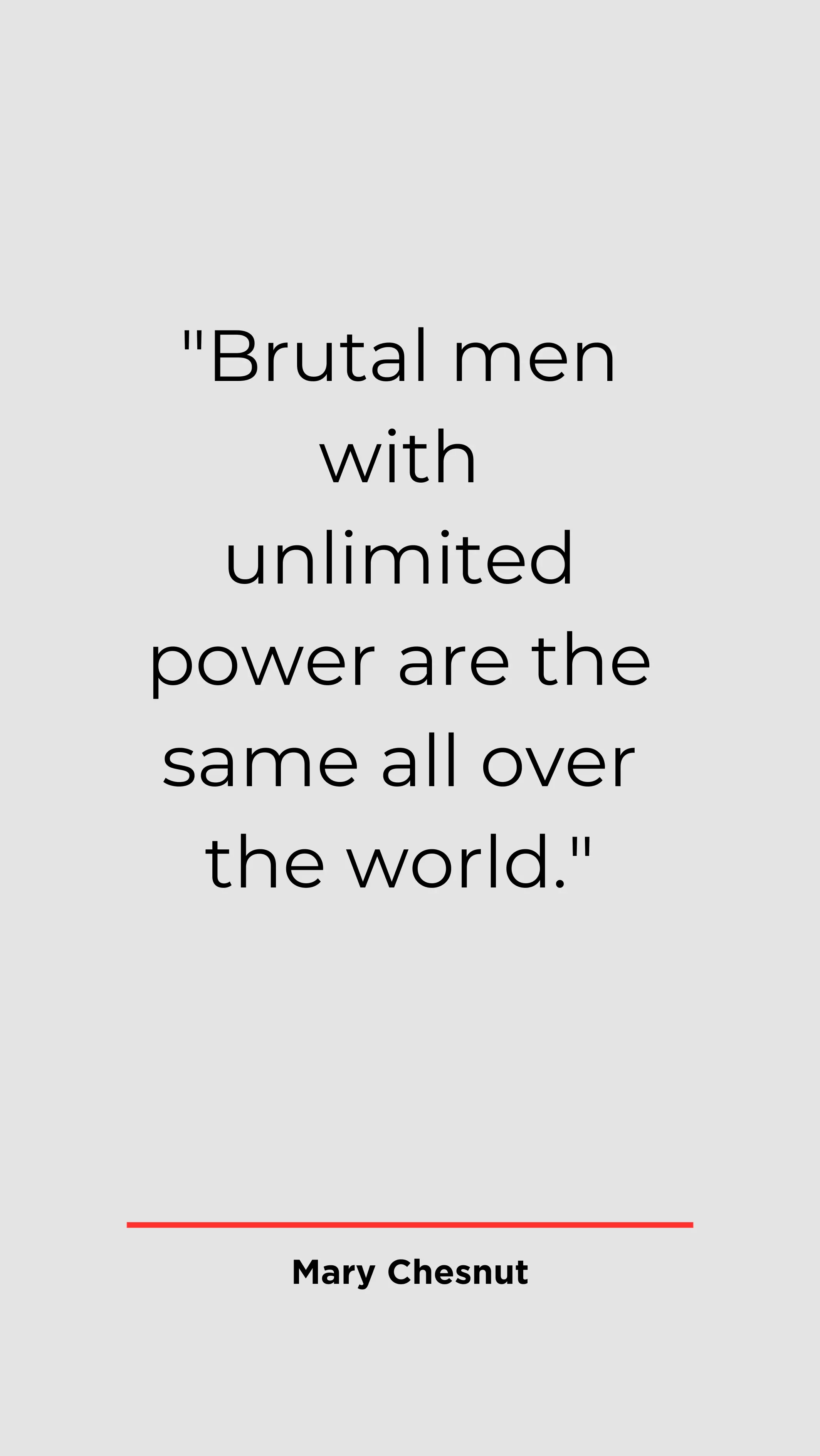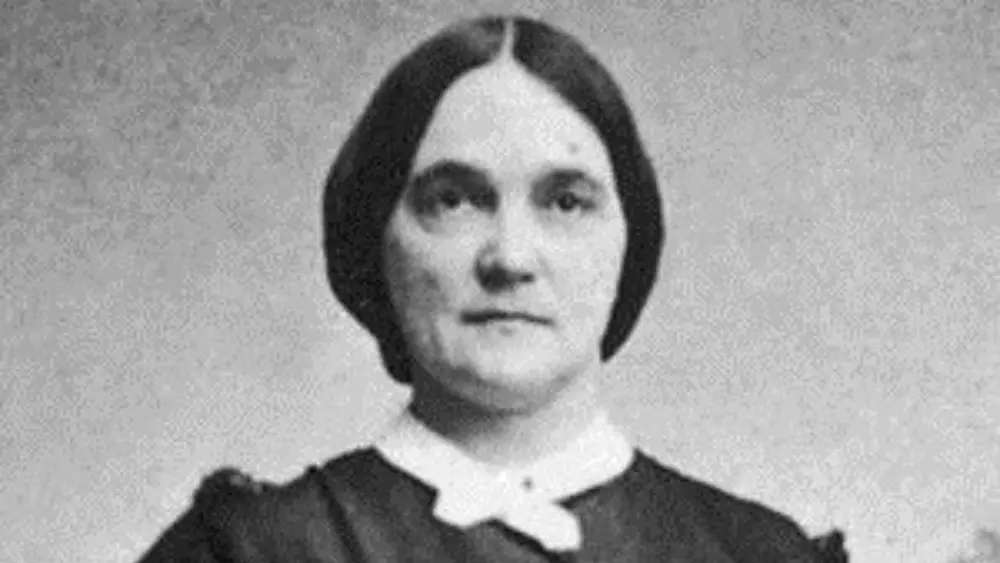Mary Boykin Chesnut, a Southern aristocrat and writer, is renowned for her captivating and insightful diaries chronicling the American Civil War. Born on March 31, 1823, in Statesburg, South Carolina, Chesnut’s remarkable documentation of the Civil War era provides a unique and invaluable perspective on one of the most transformative periods in American history.
Early Life and Upbringing
Mary Chesnut’s early life and upbringing were emblematic of the privilege and influence that characterized the Southern elite in the antebellum era. Born into a prominent Southern family, she enjoyed a childhood steeped in affluence and opportunity. Raised in an environment that prized education, Mary received a classical education, a rarity for women of her time, which cultivated her intellectual prowess and passion for literature. Her family’s wealth and status not only afforded her access to education but also immersed her in the intricate web of Southern society, where she gained an intimate understanding of its values, traditions, and power structures. As she grew, her exposure to the social and political circles of the antebellum South provided her with a unique perspective that would later shape her writings and historical legacy, making her an insightful chronicler of the complex and tumultuous period that was the American Civil War.
Mary Chesnut’s early life experiences were instrumental in shaping her into the astute observer and chronicler of her era. Born into privilege in the antebellum South, she enjoyed the advantages of wealth and a classical education that was often reserved for the elite. Her upbringing within the confines of Southern high society not only cultivated her intellectual curiosity but also nurtured her keen awareness of the intricate social and political dynamics that pervaded the region. Mary’s ability to move seamlessly through the circles of Southern aristocracy allowed her to witness firsthand the evolving tensions that would eventually lead to the American Civil War. As she matured, her unique perspective, influenced by her early life and upbringing, would become a vital component of her legacy, as her writings and observations provided valuable insights into the complexities and challenges of a nation torn apart by conflict.
Mary Chesnut: Marriage to James Chesnut Jr.
Mary’s marriage to James Chesnut Jr. was a pivotal moment in her life, one that would shape her future in profound ways. James Chesnut Jr., a distinguished lawyer and politician, was not just a husband but a gateway to the heart of Southern society and politics. This union thrust Mary Chesnut into the epicenter of the antebellum South’s elite circles, where she would wield her wit and intellect with influence. Through her marriage, she gained access to the inner workings of the Confederacy, providing her with a unique perspective on the tumultuous times of the American Civil War. Mary’s remarkable journey as a writer and diarist during this period would be greatly enriched by her position as the wife of James Chesnut Jr., allowing her to offer invaluable insights into the complexities of Southern society and politics during this transformative era.
Mary’s marriage to James Chesnut Jr., an illustrious lawyer and statesman, marked a significant turning point in her life. Her union with James elevated her status within Southern society, granting her a privileged position that would have far-reaching consequences. As the wife of James Chesnut Jr., Mary found herself at the epicenter of the South’s social and political milieu, a position that afforded her unparalleled opportunities to observe and influence the events of her time. Her unique vantage point allowed her to chronicle the intricacies of the Confederacy during the American Civil War, providing future generations with a valuable firsthand account of this tumultuous period. Mary Chesnut’s marriage to James Chesnut Jr. not only shaped her destiny but also influenced the course of her life. It left a lasting mark on the historical record, ensuring her enduring legacy as a chronicler of the South’s most critical moments.
The Civil War Begins
As the ominous clouds of the Civil War gathered on the horizon in 1861, Mary and James Chesnut found themselves inexorably drawn into the maelstrom of the secessionist movement and the Confederate government. The nation stood at the precipice of an unprecedented conflict, and the Chesnuts were not mere spectators but active participants in the unfolding drama. Their unwavering commitment to the Southern cause propelled them into positions of influence and responsibility, where they would navigate the turbulent waters of a nation divided, forever etching their names into the annals of this historic struggle.
Amidst the chaos and uncertainty of war, Mary and James Chesnut’s dedication to the Confederate cause would shape their destinies and intertwine their lives with the fates of countless others. They became central figures in the unfolding narrative of the Civil War, their actions and perspectives offering a unique window into the fervor and complexity of the era. In the crucible of conflict, they grappled with the weighty decisions and moral dilemmas that defined this pivotal period in American history. Their actions left a lasting impact on the nation’s story.
Mary Chesnut: Chronicler of the Confederacy
Mary Chesnut stands as a remarkable chronicler of the Confederacy, her meticulous diaries serving as a profound testament to her keen observations and unwavering commitment to documenting the tumultuous era. Commencing in 1861 and persisting until the war’s conclusion, her journals provide an intimate and unfiltered lens through which to view the daily life, politics, and profound societal transformations that unfolded amidst the crucible of the Civil War. With unwavering dedication, she chronicled not only the grand sweep of history but also the intricacies of human emotion and experience, illuminating the lived realities of those embroiled in the conflict.
Mary Chesnut’s diaries, in their depth and breadth, offer a vivid portrait of a nation in crisis. Through her words, readers gain access to the inner workings of Confederate society, the trials of its people, and the moral and political dilemmas faced by those she encountered. Her writings transcend mere historical record, attaining the status of a literary and historical treasure, preserving for posterity the multifaceted tapestry of the Confederacy during one of its most defining moments. Mary Chesnut’s legacy as a chronicler of the Confederacy endures, providing an enduring source of insight and reflection for those who seek to understand the complexities of the Civil War era.
Insight into Southern Aristocracy
Within the pages of Chesnut’s diaries lies a rich and illuminating window into the intricate world of the Southern aristocracy. Her meticulous writings offer not merely a glimpse but a vivid portrayal of this privileged class, shedding light on their deeply held beliefs, lofty aspirations, and the profound challenges that beset them throughout the turbulent years of the Civil War. Through her keen observations and candid reflections, Chesnut paints a nuanced portrait of a society steeped in tradition, where notions of honor, duty, and privilege were both the bedrock and the crucible upon which the Southern aristocracy’s identity was forged.
As readers delve into Chesnut’s diaries, they are transported into a world where grand estates and genteel manners coexist with the harsh realities of war. Her writings capture the essence of a bygone era, one marked by the clash of idealism and harsh pragmatism, where the dreams of the Southern elite collided with the inexorable forces of history. In these pages, the Southern aristocracy’s worldview comes alive, offering not just historical insight but a profound understanding of the individuals who inhabited this complex and stratified society.
Mary Chesnut: Confidante and Observer
Mary Chesnut’s role extended beyond that of a mere observer; she held a unique position as a trusted confidante to some of the most influential figures within the Confederacy. Among her close associates were individuals such as Jefferson Davis and Varina Davis, whose innermost thoughts and concerns found a receptive ear in Mary Chesnut. In this dual role as both observer and confidante, she became privy to the inner workings of the Confederate leadership, gaining rare insights into the challenges, dilemmas, and aspirations of those steering the course of the Southern cause.
Within the intimate circles of power, Mary Chesnut’s presence was marked not only by her acute powers of observation but also by her ability to cultivate deep and meaningful relationships. Her diaries reflect the trust and confidence bestowed upon her by prominent figures, allowing her to capture not just the public face of the Confederacy but also its private moments and innermost struggles. Through her unique perspective, we gain a richer understanding of the human dimensions of leadership and decision-making during one of the most tumultuous periods in American history. Mary Chesnut’s role as both confidante and observer elevates her significance as a historical chronicler, providing a multifaceted view of the Confederacy and its key players.
The End of the War
As the inexorable march of the Civil War neared its bitter end, Mary Chesnut’s writings served as a poignant mirror reflecting the profound despair and devastation that had come to define the Southern experience. Her diaries, once filled with the fervor and conviction of the Confederacy’s early days, underwent a metamorphosis, chronicling the tragic unraveling of the Southern dream. The weight of defeat, the toll of the conflict, and the relentless specter of loss seeped into her words, painting a somber and heart-wrenching picture of a South on the brink of collapse.
In the waning days of the war, Chesnut’s writings provide a haunting testament to the human cost of conflict, offering an unfiltered glimpse into the anguish and resignation that permeated the Southern psyche. Her ability to capture the emotional landscape of a defeated and demoralized South serves as a stark reminder of the profound impact of war on individuals and societies. Through her writings, we bear witness to the closing chapters of a tragic period in American history, where hope had faded and the scars of the conflict ran deep. These wounds left a lasting mark on the nation’s soul.
Mary Chesnut: Publication and Legacy
Mary Chesnut’s diaries, a treasure trove of her candid and insightful observations, remained concealed from the public eye throughout her lifetime. It was only in the 20th century that these invaluable writings were unearthed, bringing to light a remarkable narrative of American history. With their publication, Mary Chesnut’s diaries received well-deserved recognition for their dual significance—both as a historical record of the Civil War era and as a literary masterpiece. Her eloquent and introspective prose captivated readers, offering a vivid window into the complexities of the time, as well as the intricate workings of her own mind. This posthumous recognition of her literary and historical contributions has solidified Mary Chesnut’s legacy, ensuring that her voice endures as an enduring source of insight and inspiration for generations to come.
Mary Chesnut’s diaries, filled with her keen observations and keenly felt emotions, remained a hidden gem throughout her lifetime. However, in the 20th century, these hidden gems were brought into the light, captivating readers and scholars alike with their profound historical significance and literary brilliance. Through their publication, Mary Chesnut’s diaries have finally received the acclaim they deserve. Not only do they provide a fascinating glimpse into the turbulent times of the Civil War, but they also stand as a testament to her remarkable talent as a writer. Her words continue to resonate with readers, ensuring that her legacy endures, and her contribution to the understanding of American history remains invaluable. Mary Chesnut’s diaries serve as both a window into the past and a literary treasure, enriching our understanding of history and literature alike.

Postwar Life and Reflections
Following the tumultuous years of the Civil War, Mary Chesnut and her husband found themselves confronting the grim specter of financial ruin. The war’s devastation had left a permanent mark on their fortunes. It forced them to grapple with the harsh realities of postwar life. In the wake of this adversity, Mary Chesnut embarked on a profound journey of introspection during her later years. She marked her days not only with personal reflection but also with deep contemplation of the broader implications of the war’s aftermath, particularly its enduring impact on the South.
As she navigated the challenges of a changed world, Mary Chesnut’s thoughts turned to the scars and transformations wrought by the Civil War. Her reflections encompassed not just the economic struggles she and her husband faced but also the profound societal and cultural shifts that had taken place in the Southern United States. Through her writings and conversations, she sought to capture the essence of this pivotal period in American history, shedding light on the enduring consequences of a war that had reshaped the nation. In doing so, Mary Chesnut’s postwar reflections added depth and nuance to her already significant legacy, providing future generations with a unique perspective on the complexities of life in the post-Civil War South.








